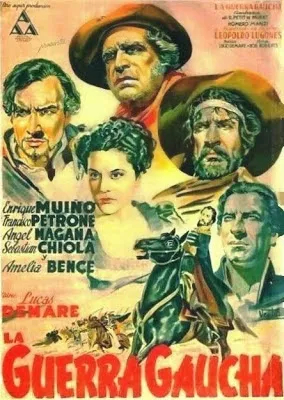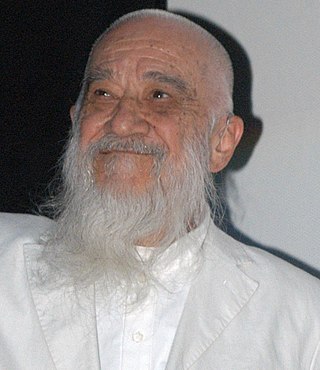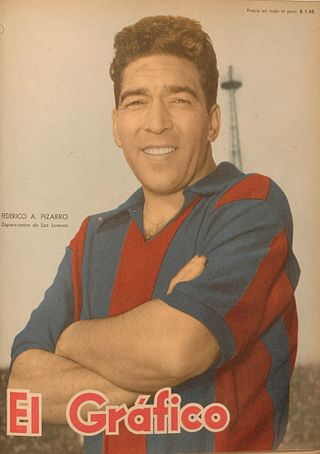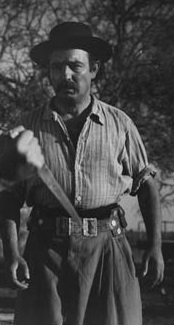| En el viejo Buenos Aires | |
|---|---|
| Directed by | Antonio Momplet |
Production company | |
Release date |
|
| Country | Argentina |
| Language | Spanish |
En el viejo Buenos Aires is a 1942 Argentine film directed by Antonio Momplet during the Golden Age of Argentine cinema.
Alfredo Le Pera was a Brazilian-born Argentine journalist, dramatist, and lyricist, best known for his brief but fruitful collaboration with the renowned tango singer Carlos Gardel. He died in a plane accident with Gardel when he was at the height of his career.

Gaucho literature, also known as gauchesco ("gauchoesque") genre was a literary movement purporting to use the language of the gauchos, comparable to the American cowboy, and reflecting their mentality. Although earlier works have been identified as gauchoesque, the movement particularly thrived from the 1870s to 1920s in Argentina, Uruguay and southern Brazil after which the movement petered out, although some works continued to be written. Gauchoesque works continue to be read and studied as a significant part of Argentine literary history.

The coat of arms of Buenos Aires is the official shield used by the different areas and dependencies of the Government of the city of Buenos Aires, Argentina.

Leandro N. Alem Partido is a partido in the north of Buenos Aires Province in Argentina.

Orestes Caviglia was an Argentine film actor and film director of the Golden Age of Argentine cinema.

Mario Paolucci was an Argentine film actor.

The Gaucho War is a 1942 Argentine historical drama and epic film directed by Lucas Demare and starring Enrique Muiño, Francisco Petrone, Ángel Magaña, and Amelia Bence. It is one of the most celebrated works of the Golden Age of Argentine cinema. The film's script, written by Homero Manzi and Ulyses Petit de Murat, is based on the novel by Leopoldo Lugones published in 1905. The film premiered in Buenos Aires on November 20, 1942 and is considered by critics of Argentine cinema to be one of the most successful films in history.

Fernando Birri was an Argentine film maker and theorist. He was considered by many to be the father of the new Latin American cinema.

Enrique Domingo Cadícamo was a prolific Argentine tango lyricist, poet and novelist. From an initial Symbolist bent, he developed a distinctive, lunfardo-rich style from an early age, and by 1925 he had his first piece, Pompas de jabón, sung by Carlos Gardel. Other notable compositions include Madame Ivonne, Che, papusa, oí, Anclado en París, Muñeca brava, Al Mundo le falta un Tornillo, Pa' que bailen los muchachos and Los mareados, originally titled Los dopados, about a couple that vows to get drunk after realizing their love is over.
Tulio Halperin Donghi was an Argentine historian. After earning a Ph.D in history and a law degree at the University of Buenos Aires, he taught at the institution's Faculty of Arts from 1955 to 1966. Halperin Donghi then moved to the National University of the Litoral, where he was named dean. He later taught at Oxford University, and became a faculty member of the University of California, Berkeley in 1972.

As of 2009, there are around 30,000 - 40,000 descent of Czechs and Slovaks living in Argentina. Argentina has the largest Czech community in Latin America. Czech immigration to Argentina began during the World War I and was divided in four periods. Czechs settled mainly in Buenos Aires, Gran La Plata, Rosario and Chaco.
Nicole Nau is a German dancer of Tango Argentino and Argentine folklore living in Argentina and Germany.

Ángel Rosenblat was a Poland-born Venezuelan philologist, essayist and hispanist of Jewish descent.

Federico Antonio Pizarro was an Argentine international footballer who played for clubs of Argentina and Chile. He played for the Argentina national football team in the Copa América Peru 1957.
Ralph Pappier was an Argentine production designer, set decorator and film director.

The first trams in Buenos Aires began operating in 1863 in what quickly became a vast network of tramways with the city being known as the "City of Trams" for having the highest tramway-to-population ratio in the world. In the 1920s, Buenos Aires had 875 km (544 mi) of tramways and 99 tram lines using 3000 carriages running throughout the city. By 1963, the vast majority of the network began to be dismantled, though some minor tram services continue in the city today.

Amelia Mirel or Alma Bambú was the stage name of Amelia Ruggero, an early Argentine vedette, singer, and silent-film actress. After making approximately 20 movies, Mirel changed her stage name to Alma Bambú and began dancing in musical revues and burlesque theater.

Raúl del Valle was a Chilean film and theatre actor who performed for most of his career in Argentina.
The 2020 COVID-19 pandemic in Argentina affected the human rights situation in the country.